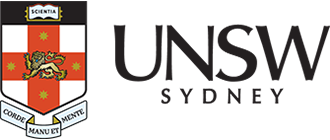AQ400 Discrete Analyzer, Seal Analytical, USA
Discrete Analyzer

Description
The Discrete Analyzer performs automated colorimetric wet chemistry- inorganic N-forms (nitrite, nitrate & ammonia) in water/aqueous solution.
Specifications
-
- Description/Technique: Discrete automated wet chemistry analyser
- Detectors: UV
- Software: AQ Software
- Detection limits (approx): 0.2mg/l
- Seawater/Saline water: 0.5 mg/l
-
- Ammonia: At alkaline pH, ammonia in the sample reacts with hypochlorite (HClO–), as previously liberated from dichloroisocyanurate. The chloramine formed then reacts with salicylate, at pH at least 12.6, in presence of nitroferricyanide. During static incubation at 40 ºC, a blue-green indophenol dye forms, which is measured photometrically at 660 nm.
- NOX (NO2- & NO3-): The sample is mixed with pH buffer and then transferred to a copperized cadmium coil, where nitrate is chemically reduced to nitrite. The chemically reduced sample is mixed with colour reagent, prepared in dilute phosphoric acid. Original nitrite, plus nitrite from chemical reduction, reacts with sulfanilamide to form a diazonium compound. This species couples with N-(1-naphthyl)-ethylenediamine dihydrochloride to form a reddish-purple azo dye that is measured photometrically at 520nm. Separate results for nitrite are obtained using AQ method except that cadmium reduction is omitted.
Applications
- System is suitable for water and water extracts of varieties of samples (no acid)
- Natural products - Plant material, animal tissues, food, compost & manure
- Environmental
- Sediments, sludge & soils
- Biological
- Chemical
Related instruments
Instrument location
Inductively Coupled Plasma - Elemental Analysis Laboratory (ICP)
Room B36
June Griffith Building (F10)
UNSW Sydney, NSW 2033
Email: icplab@unsw.edu.au
Rabeya Akter
Senior Technical Officer
-
Email
r.akter@unsw.edu.au
Khorshed Chinu
Technical Officer
-
Email
k.chinu@unsw.edu.au
Parent facility
Explore more instruments, facilities & services
Our infrastructure and expertise are accessible to UNSW students and staff, external researchers, government, and industry.





